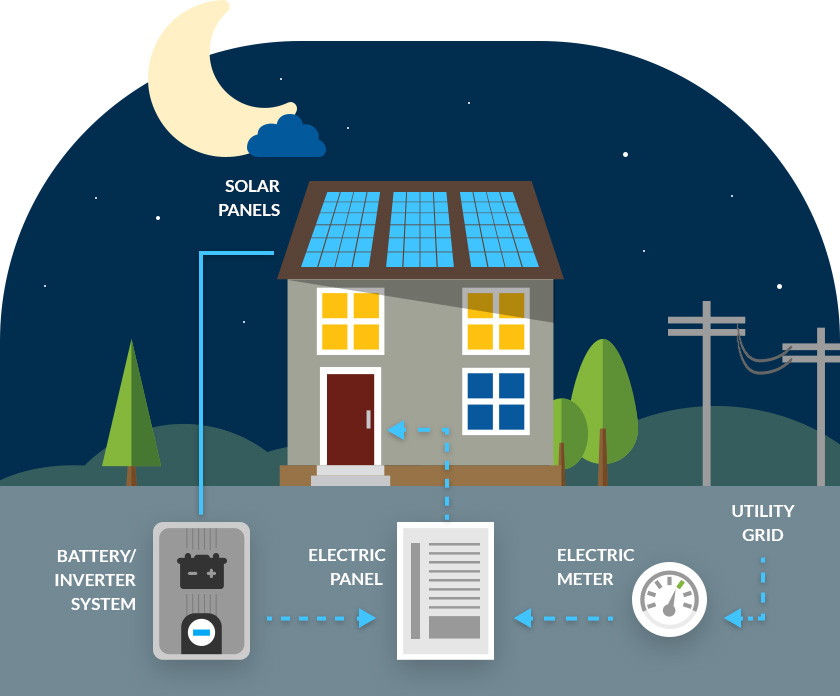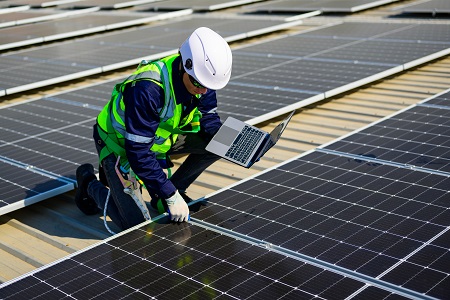Solar System Contractor Virginia: Lumina Solar Specializes In Providing Advanced Photovoltaic Solutions For Houses And Services
History and Establishing
Have you ever wondered how a solar panel business springs from a simple stimulate of inspiration into a powerhouse of renewable resource? It frequently starts with a vision-- one sustained by a blend of development, determination, and a pinch of serendipity. The journey of many solar companies mirrors the evolution of the technology itself: from bulky, ineffective panels to streamlined, high-efficiency marvels harnessing the sun's bounty.
The Early Days
In the late 20th century, when solar energy was still a niche principle, pioneers planted seeds for what would become a worldwide motion. Think of a small workshop filled with curious engineers, tirelessly try out solar batteries. Their enthusiasm was palpable, typically driven by a desire to combat environment change and decrease reliance on nonrenewable fuel sources.
One such anecdote has to do with a creator who, inspired by a camping journey, understood that even in remote locations, the sun could power necessary devices. This simple observation triggered a business's objective to democratize access to tidy energy.
Establishing Principles

- Development: Continually pushing the limits of solar innovation to enhance performance and resilience.
- Sustainability: Devoting to eco-friendly production and minimizing carbon footprints.
- Ease of access: Making renewable energy solutions cost effective and practical for daily users.
Milestones in Development
| Year | Secret Event |
|---|---|
| 1985 | Company founded in a small garage, focusing on research and development. |
| 1995 | Business solar panel item released, acquiring regional attention. |
| 2005 | Broadened to global markets, accepting international eco-friendly energy goals. |
| 2015 | Presented innovative solar panel innovation with boosted energy conversion. |
Isn't it fascinating how these incremental steps, often ignored, form the energy landscape today? The solar panel company story is not almost innovation; it's about an unrelenting mission for a brighter, cleaner future.

Developments in Photovoltaic Panel Technologies
Ever seen how some solar panels gleam brighter and last longer? It's not magic; it's the science of photovoltaic effectiveness. Modern photovoltaic panel business invest heavily in innovations like bifacial cells, which capture sunlight from both sides, improving energy harvest without expanding roof area. Have you ever wondered why some panels carry out better on cloudy days? That's due to advances in thin-film solar technology, which thrives under diffused light conditions.
Product Variations Customized to Special Requirements
One size never ever fits all. Photovoltaic panel providers now provide:
- Monocrystalline panels for maximum efficiency and smooth visual appeals, suitable for space-constrained roofs.
- Polycrystalline panels, which use an economical option without sacrificing too much output.
- Building-integrated photovoltaics (BIPV), combining solar tech perfectly into architectural components like windows and facades.
Picking the best item isn't almost upfront cost; it has to do with matching your environment, energy goals, and long-term savings. For example, homes shaded by trees require panels that master low-light scenarios, something numerous neglect until energy bills climb up unexpectedly.
Technical Tips for Ideal Selection
- Evaluate the temperature level coefficient-- lower values imply panels lose less performance on hot days.
- Search for panels with improved anti-reflective coatings to maximize light absorption.
- Consider the panel's guarantee not simply for defects, however for guaranteed power output over decades.
- Don't underestimate the value of the inverter technology coupled with the panels; it can make or break your system's efficiency.
Beyond Panels: Emerging Patterns
Picture photovoltaic panels that change their angle instantly to go after the sun-- tracking systems are ending up being more available, increasing yield substantially. Or solar tiles that blend undetectably into your roofline, changing your home into a silent, self-dependent power generator. These innovations are reshaping what a solar panel company offers-- not simply products, however integrated energy services.
Market Presence and Global Operations
Ever question why some solar panel business appear to grow up in every corner of the world while others barely make a ripple? The difference lies not just in innovation but in mastering the art of navigating diverse markets. Broadening worldwide resembles planting seeds in various environments-- you must understand each environment's distinct conditions to flourish.
Take, for example, the intricate dance of logistics and supply chain management. Shipping panels midway throughout the world isn't almost range; it's about timing, custom-mades, tariffs, and adjusting to local need fluctuations. A company with robust worldwide operations anticipates these variables, ensuring panels arrive on schedule without pumping up expenses. This foresight is no small feat and frequently separates industry leaders from followers.
Secret Techniques for Expanding Market Existence
- Localized production: Developing production hubs near target audience reduces shipping hold-ups and import intricacies.
- Strategic collaborations: Teaming up with regional firms speeds up market penetration and builds trust.
- Adaptive item design: Tailoring solar panel tech to weather, sun intensity, and facilities subtleties improves efficiency and approval.
What about the human factor? Solar panel business running globally should reconcile cultural distinctions and regulative subtleties without losing sight of their core objective. What works in a sun-drenched desert may falter in a humid coastal area. In some cases, the most innovative solution is just listening-- taking in local insights to fine-tune technology and approach.
Experts frequently encourage a phased rollout rather than a shotgun growth. Why risk overextension when measured growth develops sustainable momentum? Scaling wisely means balancing ambition with functional durability - Solar Panel Company. After all, in the race for sustainable energy supremacy, perseverance can be as valuable as speed
Environmental Impact and Sustainability Practices
When photovoltaic panels first emerged, numerous assumed they carried zero ecological baggage. The reality is more nuanced. The production of solar batteries includes rare earth metals and energy-intensive procedures, which can leave a large carbon footprint before the panels even reach roofs. Yet, the real environmental cost depends greatly on the sustainability practices used by the photovoltaic panel company throughout the lifecycle of their products.
How often do we stop briefly to consider what happens to solar panels at the end of their beneficial life? Unlike batteries or electronics, photovoltaic panels can last 25-30 years, however disposal and recycling paths remain underdeveloped in numerous areas. A business devoted to decreasing environmental harm will have a robust prepare for recycling photovoltaic materials, salvaging valuable silicon, glass, and metals to prevent garbage dump build-up.
Secret Sustainability Methods
- Making use of low-impact production strategies that decrease water and energy usage.
- Carrying out closed-loop systems to recycle production waste back into new panels.
- Engaging in transparent supply chain audits to ensure ethical sourcing of raw materials.
- Designing panels for much easier disassembly to help future recycling efforts.
It's worth keeping in mind that some solar business have actually originated ingenious techniques, such as integrating eco-friendly parts or utilizing less hazardous chemicals throughout fabrication. This not just lowers environmental strain however also sets a precedent for the market. The concern remains: can the solar industry here truly pivot towards a circular economy model without sacrificing effectiveness or affordability?
Specialist Tips for Examining Sustainability
- Ask about the company's commitment to carbon-neutral manufacturing and whether they balance out emissions.
- Examine if they partner with accredited recycling centers committed to photovoltaic panel waste.
- Look for openness reports detailing ecological effects and sustainability goals.
- Consider the longevity and service warranty of panels as an indirect procedure of resource effectiveness.
In the end, choosing for solar energy must indicate more than just slashing electrical power costs; it has to do with nurturing a future where energy is gathered responsibly and waste is thoughtfully managed. Solar panel business that embrace this philosophy not only brighten homes but likewise cast a brighter light on sustainable development.